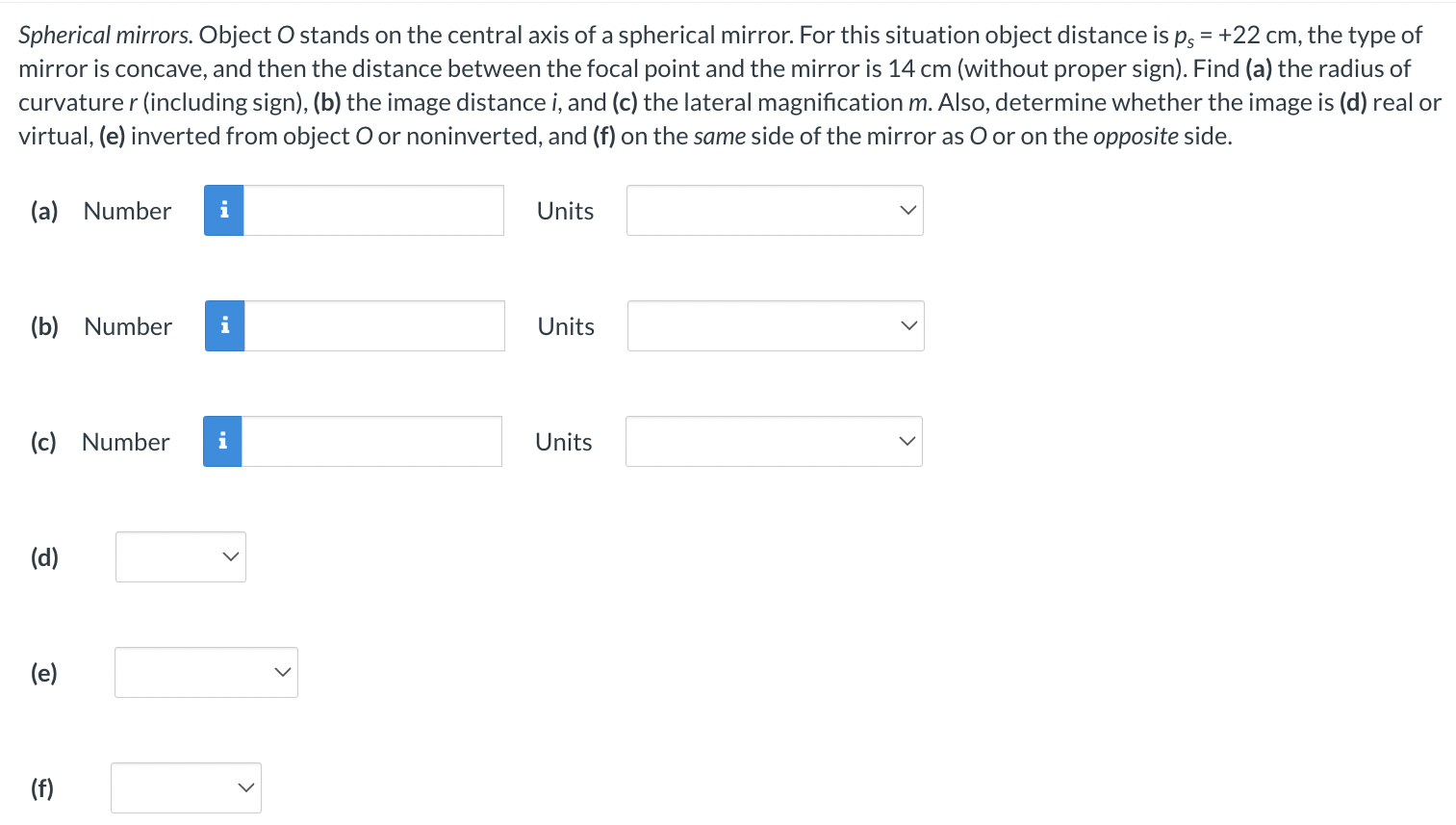Spherical mirrors. Object O stands on the central axis of a spherical mirror. For this situation object distance is ps = +22 cm, the type of mirror is concave, and then the distance between the focal point and the mirror is 14 cm (without proper sign). Find (a) the radius of curvature r (including sign), (b) the image distance i, and (c) the lateral magnification m. Also, determine whether the image is (d) real or virtual, (e) inverted from object O or noninverted, and (f) on the same side of the mirror as O or on the opposite side. (a) Number (b) Number (c) Number (d) (e) (f)
